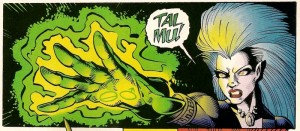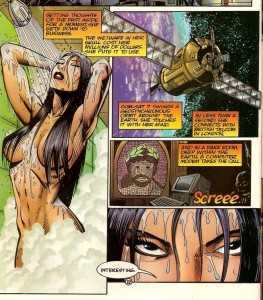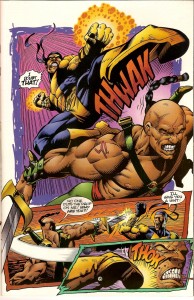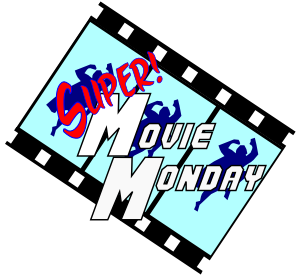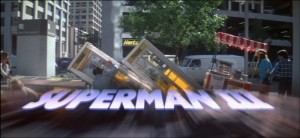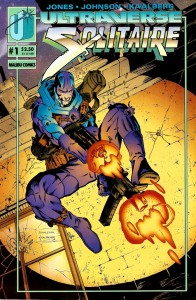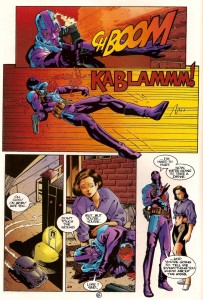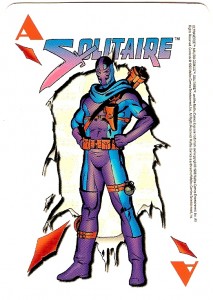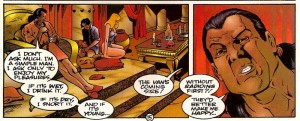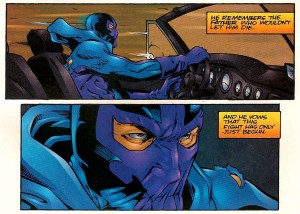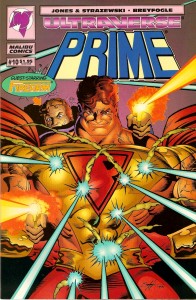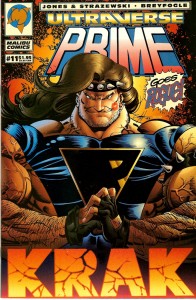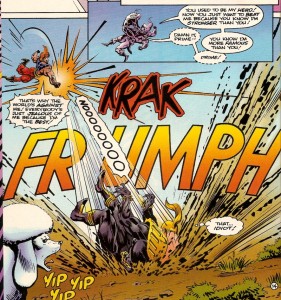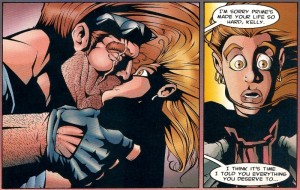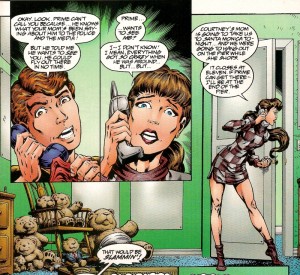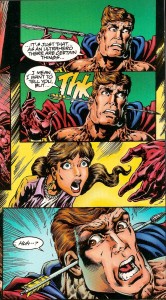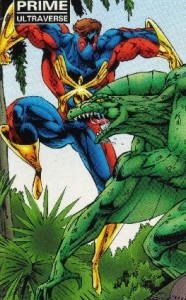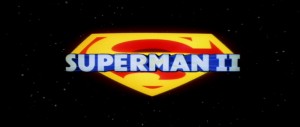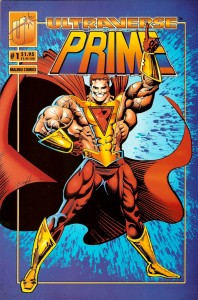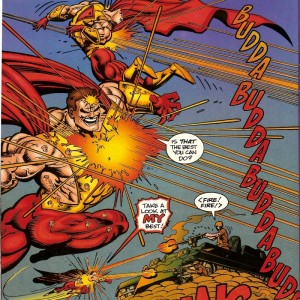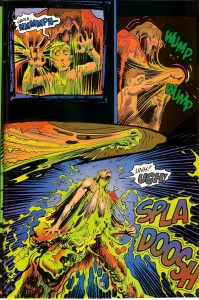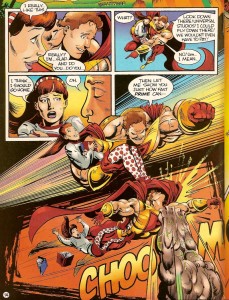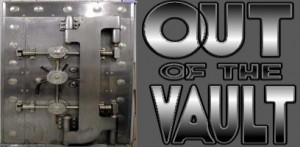
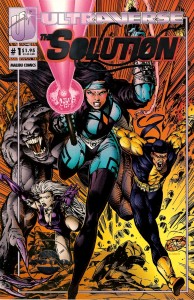 Yeah, yeah, more Ultraverse. And I think this one might kill my enthusiasm for continuing the project for a while. The Solution by James Hudnall and the usual Ultraverse line-up of revolving artists was a book that just never seemed to settle into an identity of its own.
Yeah, yeah, more Ultraverse. And I think this one might kill my enthusiasm for continuing the project for a while. The Solution by James Hudnall and the usual Ultraverse line-up of revolving artists was a book that just never seemed to settle into an identity of its own.
The Solution was the name of a group of super-powered troubleshooters. Lela Cho was Tech, who had a special implant in her brain allowing her to communicate with computers remotely. Troy Wilde was Dropkick, a super-skilled martial artist with special implants of his own allowing him enhanced strength, reflexes and vision, plus a special ki blast. Aera was Shadowmage, an alien witch. And Vurk was Onslaught, member of the alien Darkurian race,a savage shapechanger.
That should tell you the start of the problems  right there. The group seemed sort of thrown together without any kind of thematic unity. It was more like Hudnall had said, “Hey, cyberpunk’s cool. I’ll have a cyberpunk in there. And you know what else is cool? Kung fu. I’ll toss a martial artist in there. And hot elf babes casting bad-ass spells are cool, oh, and those shapechanging aliens who are virtually unkillable, like in Aliens or The Thing. Only elves are kind of ghey, so I’ll make her an alien, too. Awesome!”
And to add to the confusion, The Solution had the same continuity problems as other Ultraverse books, which is not to say that the continuity became contradictory, only that storylines often continued and/or concluded in other books. So, for instance, you could get a cliffhanger ending in one issue and come back next month in the middle of a completely different story (because it concluded in Hardcase, let’s say, and the next storyline continues from this month’s Solitaire), only to not see the conclusion of that story either, because it crossed over somewhere else.
In fact, I have this vague suspicion that the only reason I started reading it at all was because I was intrigued by the villain Rex Mundi, and it seemed in Breakthru, the first big Ultraverse company-wide crossover event, that The Solution were the arch-enemies of Mundi (I may have thought this because the nukes that were popping up in titles like Prime and Solitaire had been stolen by a group working for Mundi in The Solution #1). And so it seemed in the first couple of issues.
But Mundi dropped out of The Solution fairly quickly, and instead, the group battled various random menaces while concentrating long-term on the Dragon Fang, a triad that had stolen the company Lela Cho inherited from her father. But they and their kung fu enforcers were pretty lame, like the loser Dropkick beats up in a nicely-drawn fight by Daerick Robinson in issue #1.
So it was kind of disappointing that the big final confrontation of the series was against these same losers who were dispensed with pretty easily in the first issue, and even more disappointing after the next-to-last story arc, which featured The Solution fighting for their lives against rival armies and incredibly powerful alien sorcerers on Vurk’s homeworld.
And frankly, that story arc hadn’t been very good, either, just larger in scope. It was kind of empty and silly and served mainly so Hudnall could get off on one of the lamest Mary Sues I’ve ever seen. Like Steve Englehart’s Cosmic Madonna, Harmonica was one of those characters that the writer insisted on bringing back over and over out of some weird affection that didn’t necessarily translate to the audience (at least, not this audience).
Weirdest of all is that I stuck with this book for almost every issue, buying every one except the first and the last. So I have no idea how the story resolves, other than I figure The Solution won and Lela got her company back.
“But Fraze,” you say, “you’ve posted your scan of issue #1 right up top there. How can you say you don’t have it?”
I didn’t say I don’t own it, I said I didn’t buy it. In fact, I enjoyed the Ultraverse so much that when they had a contest to create a new character, I decided to enter with an idea of my own, a variation on DC’s Creeper that you may see in a Digger short story at some point this year (or maybe hear, hmmm?). I won an honorable mention, for which the prize was the above limited edition foil-embossed-cover issue of The Solution #1.
So there.

